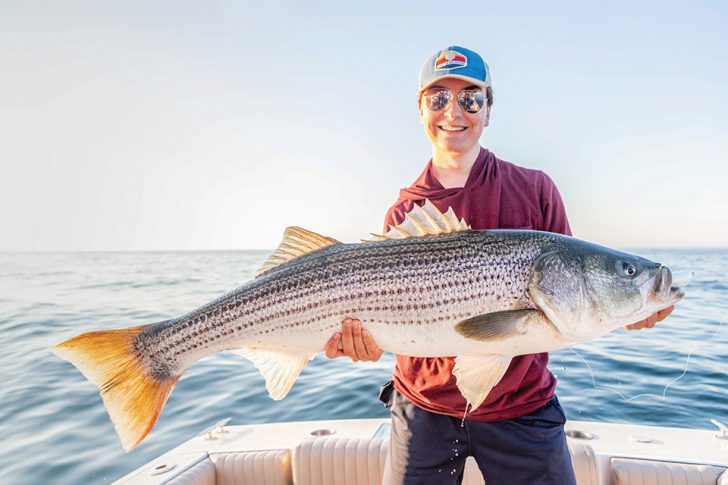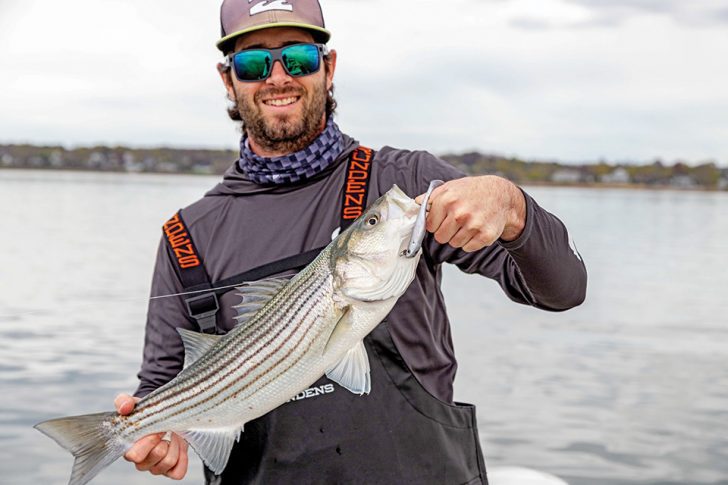
By Nick Carter
You can almost feel the excitement building on the coast of New England. Winter is ebbing, and soon warming water conditions will spark the migration of striped bass up the Atlantic coast. Jack Murphy will be waiting when they arrive.
Murphy and his partner, Jack Loveday, co-founded Lucky Jacks Fishing in Marblehead, Massachusetts. For them, April begins the busy striper season off Rhode Island and Massachusetts.
As you read this, striped bass are spawning in tributaries of Chesapeake Bay, Delaware Bay and the Hudson River. When water temperatures rise into the 50s, these fish push north with huge schools of menhaden to feed ravenous post-spawn appetites.
Murphy said the first fish collect on the south side of Cape Cod in Buzzards Bay. Timing is dependent on weather and water temperatures, so Lucky Jacks spends spring studying winds and water temps to try and intercept the first waves of migrating fish. They normally show up in the second or third week of April.
“When river herring (alewife) push into the rivers to spawn, the first waves of stripes will be right on their tails,” Murphy said. “They’re looking for that warm water, and they’re looking for that constant bait source. That’s what the rivers provide.”
Action is fast in tidal rivers like the Weweantic on the north side of Buzzards Bay. Murphy walks the dog with topwater baits like a 7-inch Lil’ Doc to draw explosive strikes from good numbers of stripers in the rivers. They’ll also eat soft-plastic eel or herring imitations like those made by Hogy, and although these river fish aren’t the monsters Murphy pursues later in the season, there aren’t many anglers who’d turn their nose up to consistent topwater activity from fish up to 20 inches.
As the season progresses, the bite moves to the mouths of the rivers, where stripers ambush herring moving out. This is where some of the bigger fish come into play, and they also can be taken on topwater.
By mid-May, Murphy said he’ll be chasing the classic New England bass blitzes, when schoolie-sized fish ball up bait and crash the surface. At this point, fish will have spread up around Cape Cod or through the Cape Cod Canal into Massachusetts Bay. Action can be intense for fish in the 2- to 10-pound range.
“You can go out early in the morning any day and find blitzing schoolies,” Murphy said. “You can catch 30 or 40 fish in just a couple hours.”

By the first part of June, anglers in search of big fish will head 5 to 10 miles offshore to find big pogy (menhaden) schools. This is a short-lived first-light bite.
“When you come on one of these schools that’s getting harassed, you’re in for a heck of a day.” Murphy said. “We’ve had a few days when our smallest fish were 37 pounds, and 40- to 50-pound fish are very possible.”
Check out Lucky Jacks Fishing at www.luckyjacksfishing.com.